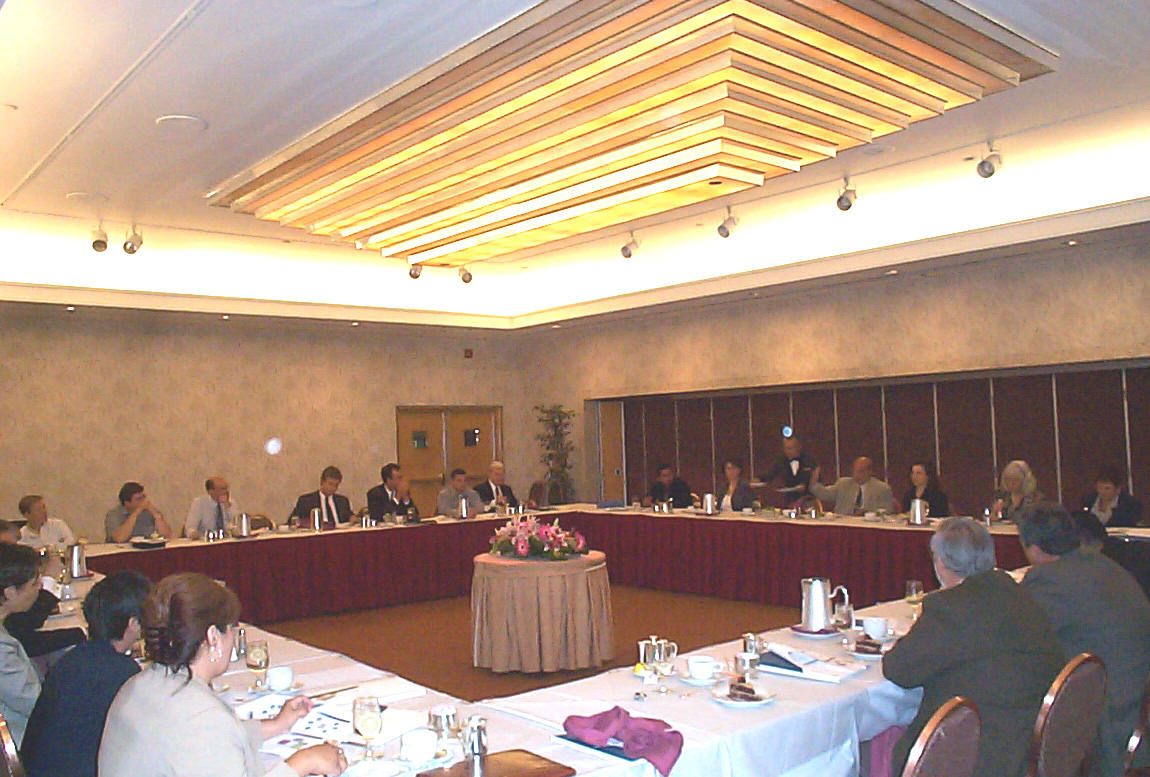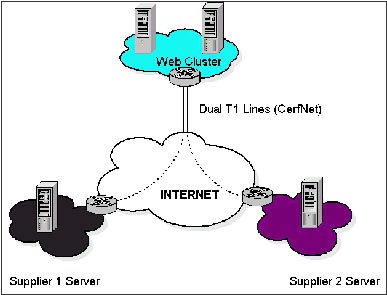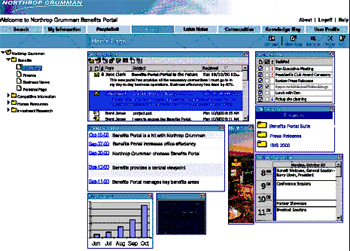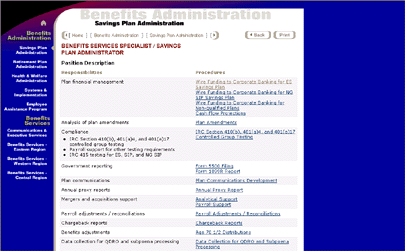
"It is
impossible for ideas to compete in the marketplace if no forum for
their presentation is provided or available." Thomas Mann, 1896
Connectivity &
Integration for
Corporate H.R.I.S. & Benefits
Sponsored by:
Northrop
Grumman Information Technology
& RemoteNet Corporation
 The
Business Forum recently organized a luncheon discussion with Northrop Grumman Information Technology
Division & RemoteNet
Corporation at the Wilshire Grand Hotel,
The
Business Forum recently organized a luncheon discussion with Northrop Grumman Information Technology
Division & RemoteNet
Corporation at the Wilshire Grand Hotel,
in
Los Angeles, California
Those accepting our invitation
included:
Human Resources Director - Alfred Publishing Company * Senior Consultant American Honda Motor Co., Inc. * Benefits Director - Anchor Blue/Hub Distributing * Director, Center for Effective Teaching & Learning - California State University Los Angeles Information Systems Chairperson - California State University Los Angeles * Director of IT - Cerwin-Vega! * CFO/Director of Finance - Distribution & Auto Services Inc. * IT Director - Easton Sports Inc. * Director of Human Resources - El Camino Community College District * President - Essential Organization Inc. Manager, IT Security - Farmers Insurance Company * Benefits Manager/ Human Resources - GenCorp Aerojet Corporation * Investor Relations - Intellapoint, Inc. Human Resources Supervisor - Juanita's Foods * Human Resources Manager Juanita’s Foods * Administrator, Information Systems - LAC+USC Healthcare Network Supervisor, Pension & Benefits - Los Angeles County Metropolitan Transportation Authority * Senior Programmer Analyst - Los Angeles County Metropolitan Transit Authority * Recruitment & Selection Services Manager - Los Angeles Department of Water & Power * HRIS Director - Metropolitan Water District of Southern California Director of IT - Merle Norman Cosmetics * Office Manager - New Vac Electronics Inc. Director of Technology - NTT Data International * Benefits Manager, Human Resources Administration - Paul, Hastings, Janofsky & Walker LLP * Chief Human Resources Officer - Pepperdine University * Director of Information Systems - UDT Sensors, Inc. Vice President - Union Bank of California President - Veritas Group * Vice President Human Resources - Wherehouse Entertainment, Inc.* Payroll Manager - Wherehouse Entertainment, Inc. * Vice President of Information Systems - Investor's Daily/William O'Neil & Co.
For the benefit of those of our members and
supporters who could not
attend the meeting we present the following white
paper, with contacts.
CONNECTIVITY
& INTEGRATION
FOR CORPORATE BENEFITS DEPARTMENT
A Case Study
Author: Lynne Halverson
Sponsored by RemoteNet Corporation
1. Executive Summary
1.1 Overview
The purpose of this case study is to provide a review of the solutions provided by RemoteNet Corporation to the client in support of the client’s stated vision and objectives in regards to the delivery and administration of employee benefits via a corporate benefits and administration services department.
1.2 Client Profile
The
featured client in this study is the corporate benefits administration and
services department for a $15 billion global aerospace and defense company
that provides high technology and innovative products, services and solutions
to U.S. and international military, government and commercial customers. The
company has 80,000 employees and operations in 44 states and 25 countries.
The
client delivers benefits services to as many as 200,000 people, including
active employees, retirees, deferred vested employees and dependents. Each
year, the client pays claims and/or premiums and service fees approaching $500
million for the health plans it manages. The client currently maintains about
$18 billion in trust assets, including employee pension and savings plans.
The
client maintains a staff of over 60 internal personnel. Outsourced supplier
personnel bring the actual staff total to over 200 FTEs.
Long
a proponent of a strong IT infrastructure, the client maintains a computer
network separate from the main company network. Currently, over 25 servers are
in operation on the network, some of these in redundant roles.
The client believes that in order to deliver the highest quality, lowest cost, integrated benefits services to its customers, it must implement self-service delivery systems using leading-edge information technologies.
2. Problem Definition
The client faces a number of systems and integration issues, which are largely the result of a diverse operational environment, outsourcing of services to multiple suppliers, and ongoing mergers, acquisitions and growth initiatives in the industry.
2.1 Client Environment
2.1.1. Systems
The client maintains a computer network separate from the main company network. Currently, over 25 servers are in operation on the network, some of these in redundant roles.
The client’s internal applications and systems are also varied. Dissimilar systems include PeopleSoft, SAP and Lawson; homegrown host applications on mainframes; and Access databases and Excel spreadsheets. Platforms include Oracle databases, Lotus Notes systems and SQL 7 and SQL 2000 databases.
The client has variable controls over its own data; consequently, there are inherent issues in providing real access to that data. Relationships need to be cultivated with internal departments as well as suppliers to gain additional access. There are fiduciary concerns in regards to giving the client access to the data directly versus outsourcing management of the data within the environment and allowing the client to have read-only views.
The client currently leverages a Document Management System (DMS) to import all documents for archival purposes. Suppliers have recently begun replicating data to the DMS system on a regular basis.
The DMS will serve as an alternative source for all images. It is the client’s intention to have a redundant system, as opposed to relying on production data, in order to achieve a single repository for all information. This repository will also provide quick access and total reliability. The DMS will provide both historical database storage as well as a beneficiary database.
The client’s goal is to be able to allow a participant, employee or supplier the ability to perform a query on the data using minimum criteria over a large number of data warehouses. A participant potentially would have the capability to enter a social security number into a web-based portal and then query all external and internal systems for relevant records.
Historically, data access between the client and its suppliers has taken place via frame relay connections.
2.1.2. Suppliers
The administration of the client’s company benefits is outsourced to a number of suppliers. Benefits Administration Provider “A”, an industry leader in the benefit administration business, is the principal outsourcing partner. Benefits Administration Provider “A” provides the client with outsourcing services for all defined benefit and health and welfare benefit plans. In addition, they provide both human resources and organizational consulting services.
There are a variety of best-in-class systems that Benefits Administration Provider “A” uses to administer the benefit plans. Benefits Administration Provider “A” uses an NT Server-based system application to produce pension statements, calculations and estimates.
Through an additional module, Benefits Administration Provider “A” uses the latest available technology to ensure accurate record keeping of health plan benefit selections, plan updates and changes, life events and enrollments. This application is Unix-based and runs on a Sun platform.
The client works closely with Benefits Administration Provider “A” and the selected health plan insurance providers to see that all problems are resolved as quickly as possible. In regards to participant service issues, Benefits Administration Provider “A” uses a Lotus Notes-based system to track and resolve all outstanding benefit-related issues that arise. This interactive system acts as the focal point of the employee benefits issue resolution process.
It is the expectation that a large number of these systems will be web based in the future.
Currently
when a participant calls the client for customer service, they are calling to
Benefits Administration Provider “A”, which is transparent to the end
user. Benefits Administration Provider “A” opens a call and administrates
the overall resolution process, then replicates current information to the
client on a regular basis.
The client user community accesses a large majority of the Benefits Administration Provider “A” programs via Citrix for viewing of participant information. This type of access prevents manipulation of the data to the back end systems by allowing view-only access.
The client
user community also leverages Lotus Notes for communication with the Benefits
Administration Provider “A” case management module. This allows access of
up-to-date information by the client and also acts as a middleware between the
client’s accounts payable system and the general ledger system at the Bank
Trustee.
2.1.3. Industry
The defense and aerospace industry has undergone significant numbers of mergers, acquisitions, and consolidations in recent years. The benefits departments within this industry are significantly impacted by these corporate initiatives, in that they must absorb and integrate new systems and databases and administer additional benefits plans for the affected employees.
The client has participated in a series of acquisitions over the past four years. It is likely to see additional acquisitions in future as part of corporate growth initiatives.
3. Client Objectives
The
client’s stated vision is to “provide integrated, top quality, cost
effective, client-focused benefits delivery to all company elements and to
employees, retirees, and terminated vested program participants using
appropriate leading edge information technologies.”
To assist the client in making this vision a reality, RemoteNet worked with the client to identify the following objectives:
-
Improve client - supplier data communications
-
Track client and supplier projects and costs
-
Provide management reporting
-
Provide integrated, client-focused benefits delivery system
-
Ensure system and process availability
-
Integrate benefits applications and data source
4. Solutions
In November of 1998 the client contracted with RemoteNet to perform a study on the practicality, security and realized throughput of providing a virtual private network from the client’s network to suppliers. RemoteNet’s services to the client have since been extended to provide multiple solutions to meet the stated initiatives. The objective and goal of each solution, together with the actions taken to implement it, are described below.
4.1. Virtual Private Networks (VPNs)
4.1.1. Objective
Improve functionality of and access to distributed supplier systems.
4.1.2. Goal
Replace leased data lines.
4.1.3. Action
RemoteNet proposed to engage two of the client’s major suppliers for the installation of a VPN between the client and the supplier. The project took a two-step approach: first, install a VPN from Benefits Administration Provider “B” to the client and, second, upon successful testing of functionality, repeat the process with Benefits Administration Provider “A”.

Figure 4.A: Client - Supplier VPN Configuration
The project plan was to install VPN technology that would allow leased lines through a public switched network to appear as a private WAN link between the client and suppliers’ offices.
RemoteNet’s recommendation of the installation of VPNs was due to research indicating that VPNs:
-
Connect LANs in different sites without use of a PSTN or leased line
-
Provide the ability to transfer secured data to suppliers as if they were part of the client’s LAN
-
Provide secure access to corporate resources for customers, clients and consultants
-
Replace traditional dialup connections for remote users and telecommuters
-
Reduce telecom costs by using the Internet to carry traffic and reducing the number of access lines required
-
Reduce operational costs by outsourcing remote access management to a service provider
-
Employ a standard communication protocol regardless of platform (Unix, Windows, Mac) enabling true distributed computing
The project began with a statement of work, which was delivered and discussed with the suppliers to coordinate and plan the upcoming steps. Initially, the supplier IT teams were not enthusiastic about the plan for a collaboration of services and data via a VPN.
Security concerns prompted the client and RemoteNet to form a task force with the suppliers in order to further examine and test the VPN concept. Tests were performed to gauge VPN integrity, security, stability, and bandwidth availability. The task force determined that the VPN solution appeared to be as secure, if not more so, than the configuration of the existing LAN with a frame relay to the Internet. Furthermore, the group discovered that by utilizing the public network, monthly connectivity costs would be reduced as much as 50%.
The VPNs were successfully installed in February 1999. The success of these initial installations has led to the client adopting VPNs as the preferred method of connectivity between internal operations and suppliers.
4.2 Executive Project Tracking
4.2.1. Objective
Track
client and supplier projects and costs.
4.2.2.
Goal
Develop,
operate and maintain a project tracking and reporting system.
4.2.3.
Action
At
the start of its engagement with the client, RemoteNet discovered that one of
the client’s chief challenges lay in tracking the progress of and costs
associated with supplier-managed projects. The client expressed a need for a
high-level project review capability.
RemoteNet
responded in 1999 with the creation of the web-based Executive Project
Tracking system. This custom application allows both the client and its
suppliers to enter and track projects, associated costs, milestones and
activities while also linking the project to the original contract and/or
statement of work.
The Executive Project Tracking System answered the client’s need for a method of monitoring the work of suppliers and adherence to their contractual agreements. Off-the-shelf applications, such as Microsoft Project, could not meet the client’s needs due to their project-centric nature. The Executive Project Tracking System is unique in that, while it provides project detail, it is not focused exclusively on the details and minutia of the project. It’s value-add lies in its high-level tracking and reporting capabilities.
Figure 4.B: Sample Executive Project Tracking Screen
The first version of the Executive Project Tracking System was based on a Microsoft Access database with a Visual Basic user interface. As the client requested increased functionality from the application, it was converted to an SQL/ASP based solution. Requirements for the application continue to expand, and RemoteNet anticipates adding invoice-tracking and other functionality in the near term.
4.3 Metrics
4.3.1. Objective
Provide
web-enabled management reporting.
4.3.2.
Goal
Assimilate
content and data from suppliers, internal resources, and customer/supplier
survey.
4.3.3.
Action
The client receives a variety of weekly, monthly, and annual reports and data concerning benefits costs; benefits processing speed and accuracy; customer satisfaction; and supplier costs and action plans. These measurement reports have historically been paper-based and available only via traditional channels.
Figure 4.C: Benefits Metrics Site Opening Page
In September 1999, RemoteNet proposed to web-enable these reports in order to
provide the client with easy, shareable access to the materials. A website for
the client’s internal use, Benefits Metrics, was built to meet this need.
Benefits Metrics provides the client with a single source for the metrics that
measure the operations of the benefits efforts. The client can define who
within the company has access to the site and to individual reports, thereby
making reports available to users on an as-needed basis.
Since the successful launch of the Benefits Metrics site in 2000, RemoteNet has provided ongoing maintenance for the site and is currently researching the use of real-time streaming data to update reporting. RemoteNet proposes to put in place an XML solution that will (1) reduce the need for manual entry and manipulation of data; (2) provide a conduit for ease-of-sharing of client-supplier metrics data; (3) enhance and expand the site’s functionality for the client.
4.4 Benefits OnLine
4.4.1. Objective
Provide
integrated, client-focused benefits delivery system.
4.4.2.
Goal
Develop employee benefits website.
4.4.3.
Action
Central to the client’s vision of providing “integrated, top quality, cost effective, client-focused benefits” is the belief that customer service is the driving force behind the organization. The customers are perceived as having very high expectations for benefits delivery.
Figure 4.D: Benefits OnLine Opening Page
In September 1999, RemoteNet launched the development of Benefits OnLine, a
web-based employee benefits information and transaction site. The site was
designed and is maintained keeping in mind the client’s goal of implementing
self-service benefits delivery systems using leading-edge information
technologies. Benefits OnLine is currently comprehensive in the information it
offers to the client’s current employees concerning their benefits.
Information concerning recently acquired entities is added on an as-needed
basis. RemoteNet is working on enhancements to the site that include
comprehensive information on retiree benefits.
The original scope of the Benefits OnLine project was to create a single, web-enabled space for benefits information. Based on the success of the original installation, RemoteNet is now working on an expanded project scope. Future site functionality will include user personalization; online forms completion; and enhanced transactional capabilities.
4.5 Business Resumption Plan
4.5.1. Objective
Ensure
system and process availability.
4.5.2.
Goal
Develop
systems and processes recovery plan.
4.5.3. Action
The client has a clear responsibility to ensure the availability of its systems and processes and the benefits provided to corporate employees. RemoteNet participates in the development and maintenance of the client’s formal business resumption plan (BRP).
Figure 4.E: Sample Job Binder Job and Procedure Access Screen
RemoteNet’s responsibilities under the plan include the identification of
mission critical client processes and the systems that support them; the
methodology for recovery and resumption of these processes and systems under a
disaster scenario; and participation in the actual recovery process in the
event of a disaster. RemoteNet actively participates in the ongoing
maintenance, review, revision and testing of the client’s BRP.
As a value-add to the client’s BRP, RemoteNet is currently developing web-enabled business procedures for the client. In addition to providing support for daily operations, the custom Job Binder application will allow for easy access to procedures by staff members unaccustomed to performing those procedures under a reduced-staffing scenario.
4.6
Web Portal
4.6.1. Objective
Integrate benefits applications and data sources
4.6.2. Goal
Provide a single front-end for users to access client benefits applications
4.6.3. Action
Enterprise
Information Portals (EIP) are applications that enable companies to unlock
internally and externally stored information and provide users a single
gateway to personalized data needed to make informed business decisions. They
are a merger or a collaboration of software applications that consolidate,
manage, analyze and distribute information across and outside of an enterprise
(including Business Intelligence, content management, and data warehouse mart
management applications).
To address
the client’s objective of integrating its applications and information for
ease of use by the employees who administer employee benefits, RemoteNet
formed a portal evaluation team in mid 2000 for purposes of determining the
viability and reliability of an EIP solution.
The
evaluation team, comprised of client, supplier, and RemoteNet representatives,
took a phased approach to the project. This approach was designed to fully
determine the client’s portal requirements and technological environment as
well as the portal software capable of meeting those requirements and working
within the environment.
The project was divided into nine distinct phases:
The Portal Evaluation Team formation
Assessment of Current Environment
Defining the Portal
Research and Resources
Building Requirements
Vendor Selections and Product Presentations
Developer Selection
Product Evaluation
Product Evaluation Summary and Recommendations
RemoteNet interviewed the client’s prospective portal user groups and department managers to provide an accurate view of program and access rights requirements. The information was essential in determining and constructing building requirements. The portal team believed that in order to provide a realistic recommendation, it must be certain of the systems, applications and data to which users need access and, more importantly, the type of access needed.
The team’s goal was to undertake a very aggressive schedule (less than one month) during which the group would develop a comprehensive understanding of the various portal products selected for review. It was the team’s intention to obtain resources from various organizations in order to provide an unbiased opinion to the client. It was also imperative to have a wide range of knowledge and areas of expertise within the group to increase the level of understanding overall.

Figure 4.F: Sample Portal Application Screen
The team narrowed the EIP application field to four vendors, from which it ultimately selected one for recommendation to the client. RemoteNet is currently in the process of implementing a pilot program for the recommended EIP application, during which it will install the application at the client site, integrate selected applications, and solicit user feedback on the effectiveness of the application.
5.
Conclusion
The provision of employee benefits and services is a data and process intensive endeavor. RemoteNet’s goal in meeting the needs of the featured client has been to make readily available the technology tools that facilitate the delivery of employee benefits. Through the effective deployment of these tools, the client is able to leverage the existing skills of its staff to take on an ever-increasing workload and responsibilities in an efficient, integrated manner.
Visit the Authors Web Site
Inquiry Only - No Cost Or Obligation

 Search Our Site
Search Our Site
Search the ENTIRE Business
Forum site. Search includes the Business
Forum Library, The Business Forum Journal and the Calendar Pages.
Disclaimer
The Business Forum, its Officers, partners, and all other Home
Calendar The Business Forum Journal
Features
Concept
History The Business Forum webmaster:
bruceclay.com
parties with which it deals, or is associated with, accept
absolutely no responsibility whatsoever, nor any liability,
for what is published on this web site. Please refer to:
Library
Formats
Guest Testimonials
Client Testimonials
Experts Search
News Wire Join
Why Sponsor
Tell-A-Friend
Contact The Business Forum
Beverly Hills, California U.S.A.
Telephone: 310-550-1984
[email protected]
